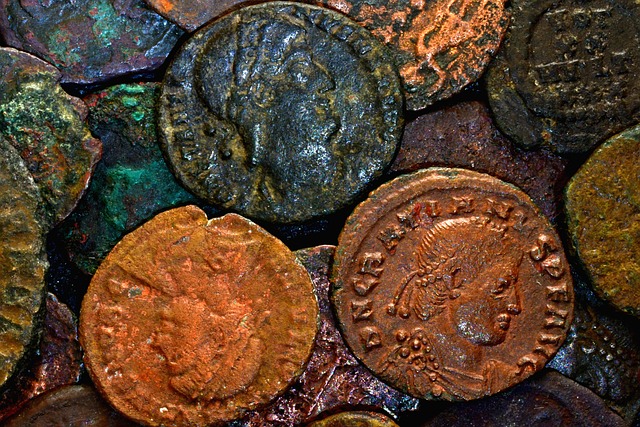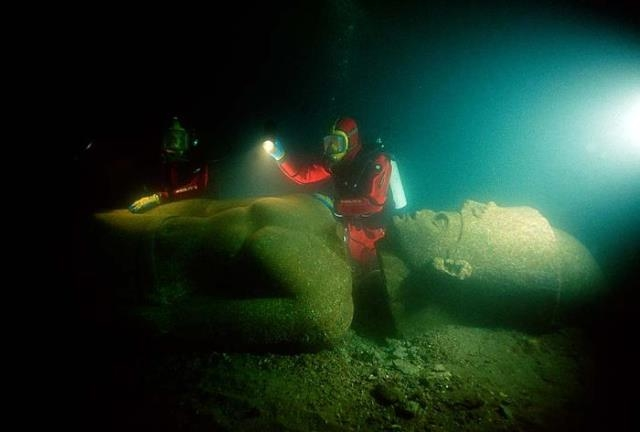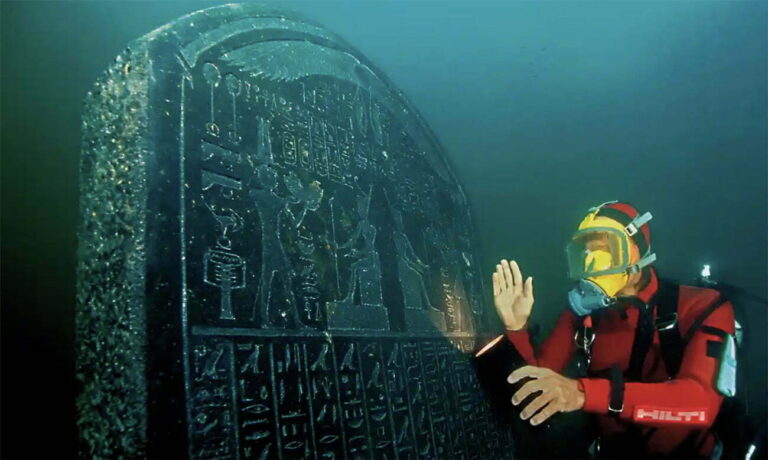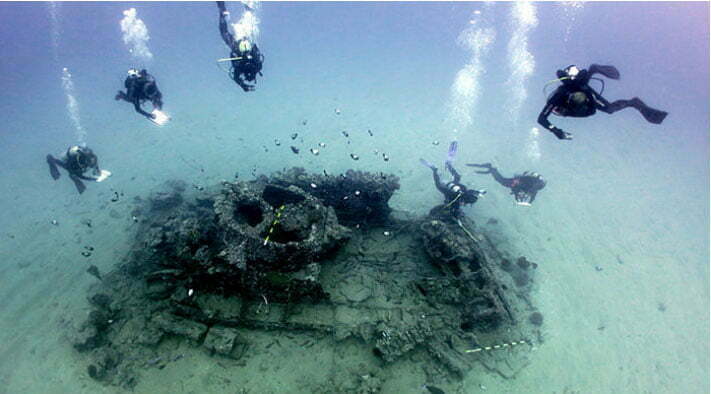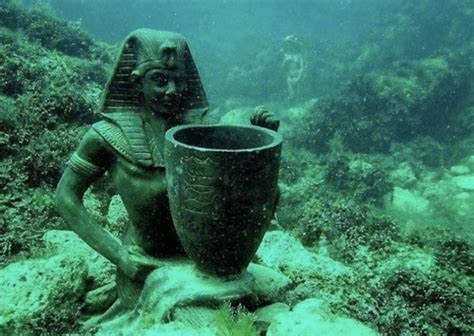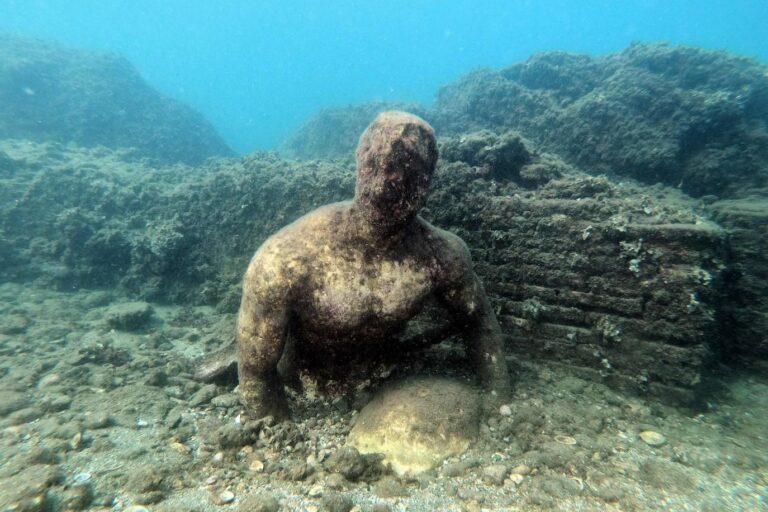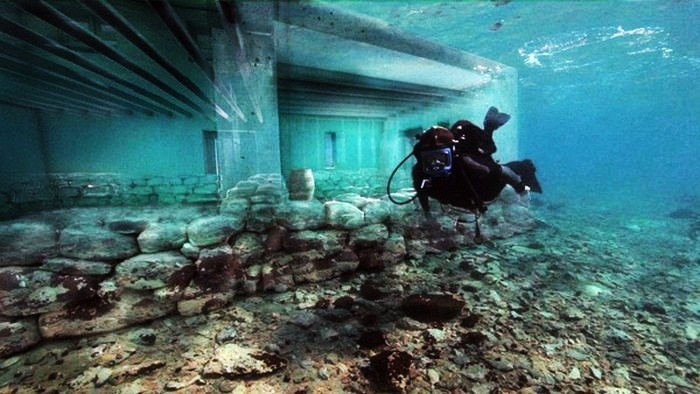Underwater Discoveries: A Journey Through Submerged Heritage
Underwater discoveries have always fascinated mankind, offering us a unique and captivating glimpse into our submerged heritage. The significance of these findings goes far beyond their aesthetic appeal or historical value. These underwater archaeological treasures provide invaluable insights into ancient civilizations and their way of life, enriching our understanding of the past.
The purpose of this article is to embark on a journey through the wonders of underwater discoveries, delving into the intriguing world of submerged heritage. By exploring famous shipwrecks, lost cities beneath the sea, and underwater art, we will uncover the hidden stories and cultural expressions that lay beneath the waves.
Join us on this exploration as we unravel the mysteries of underwater archaeological findings and appreciate the significance they hold in preserving and understanding our shared human history. Let us dive into the depths and explore the wonders that lie beneath the surface.
Table of Contents
The Importance of Submerged Heritage
Underwater discoveries hold immense historical value and offer valuable insights into ancient civilizations. These submerged treasures contribute to a better understanding of our past, shedding light on civilizations long gone. By exploring underwater archaeological findings, we can piece together the puzzle of our history.
One of the crucial aspects of submerged heritage is the preservation of artifacts in underwater environments. Unlike on land, where ravages of time and human interference can deteriorate cultural artifacts, the underwater environment often acts as a natural preserver. Objects lying undisturbed underwater can offer a unique glimpse into past civilizations, allowing us to study and appreciate their art, craftsmanship, and way of life.
However, uncovering and documenting submerged heritage presents its own set of challenges. The underwater world poses obstacles that are not encountered in traditional archaeological sites. The depths, currents, and lack of visibility can make exploration and excavation difficult. Furthermore, the sensitive underwater ecosystems and the need to protect underwater cultural heritage add an additional layer of complexity to the process. Nevertheless, the importance of preserving and understanding these submerged treasures makes these challenges worth overcoming.
In conclusion, the historical value of underwater discoveries in unraveling ancient civilizations cannot be overstated. The preservation of artifacts in underwater environments offers a unique opportunity to study our past, while the challenges faced in exploring and documenting submerged heritage must be overcome for us to fully appreciate and protect these cultural treasures. By recognizing the significance of submerged heritage and supporting continued exploration and preservation efforts, we can ensure these valuable insights into our history are not lost to the depths of the sea.
Ancient Shipwrecks: Unveiling Maritime Secrets
Shipwrecks found underwater, such as the Titanic and the Mary Rose, offer a fascinating glimpse into maritime history. The process of locating and excavating these shipwrecks is a meticulous one, requiring advanced technology and expertise.
The discovery of these ancient vessels provides valuable insights into our past. By studying the remains of these maritime ruins, historians and archaeologists can uncover the stories of the people who once sailed on these ships, the goods they carried, and the challenges they faced at sea. These shipwrecks allow us to connect with the past in a tangible way, offering a window into different eras of maritime exploration and trade.
The Titanic, one of the most famous shipwrecks, was discovered in 1985. Its wreckage has provided invaluable information about the ship’s construction, as well as the conditions and lifestyles of those on board. Similarly, the discovery and excavation of the Mary Rose, a 16th-century warship, have provided valuable insights into naval architecture, weaponry, and life at sea during the Tudor period.
Through careful examination of these shipwrecks, experts have been able to piece together a more comprehensive understanding of maritime history. Each artifact recovered tells a story of the people, cultures, and technology of the past, shedding light on how these ancient societies navigated the vast seas.
These maritime ruins serve as a testament to human ingenuity, the perils faced by seafarers, and the importance of exploration. They remind us of the risks taken and the mysteries waiting to be unveiled beneath the waves. By preserving and studying these shipwrecks, we can continue to uncover the secrets of our maritime past, deepening our understanding of history and our connection to the world’s oceans.
In conclusion, the exploration and study of ancient shipwrecks found underwater provide invaluable insights into maritime history. The discovery of famous wrecks, such as the Titanic and the Mary Rose, allows us to delve into the lives and challenges faced by seafarers from different eras. Through meticulous excavation and examination, these maritime ruins offer a tangible connection to our past, unveiling historical insights that shape our understanding of human civilization and our relationship with the sea.
Lost Cities Beneath the Sea: Exploring Ancient Civilizations
One of the most fascinating aspects of underwater discoveries is the exploration of lost cities that lay hidden beneath the sea. These ancient submerged settlements, such as the legendary Atlantis and the ancient city of Dwarka, offer a glimpse into the rich history of ancient civilizations.
Uncovering these lost cities is no easy task and requires a meticulous methodology. Researchers utilize advanced technologies like sonar imaging and underwater drones to locate and map the submerged remains. Once a potential site is identified, divers and archaeologists carefully excavate the underwater ruins, uncovering treasures hidden for centuries.
The exploration of these lost cities provides significant historical knowledge. For example, the discovery of Dwarka in the Gulf of Cambay, India, has shed light on the ancient kingdom of Lord Krishna. Artifacts recovered from the site suggest a thriving maritime civilization and have challenged previously held beliefs about the region’s ancient history.
Similarly, the legendary lost city of Atlantis continues to captivate the imagination of researchers and enthusiasts alike. While its exact location remains a mystery, the search for this ancient city has led to exciting underwater discoveries in places like Santorini and Bimini. These findings contribute to a better understanding of ancient seafaring civilizations and offer us a chance to explore the depths of our own past.
Through the exploration of lost cities, we gain insights into the technologies, cultures, and societies that once thrived beneath the waves. These underwater archaeological sites provide a unique perspective on ancient civilizations and their connections to the present. By preserving and studying these submerged heritage sites, we can unravel the mysteries of the past and gain a deeper appreciation for our shared human history.
Underwater Art: Preserving Cultural Expressions
Underwater art installations and sculptures possess a unique allure that captivates both art enthusiasts and marine conservationists. These submerged masterpieces not only serve as visual spectacles but also play a crucial role in promoting awareness about our marine ecosystems.
Examination of underwater art installations and sculptures reveals a fascinating fusion of creativity and conservation. These artworks, carefully crafted and strategically placed, create artificial reefs that transform barren underwater landscapes into vibrant habitats for marine life. By providing shelter and surfaces for colonization, these installations ultimately contribute to the preservation of marine ecosystems.
The significance of these artistic expressions lies not only in their aesthetic appeal but their ability to convey powerful messages about environmental issues and the need for sustainable living. Through thought-provoking themes and symbols, underwater art raises awareness about the plight of our oceans, encouraging individuals to take action in preserving these vital ecosystems.
Creating and installing underwater art, however, presents a set of unique challenges and techniques. Artists must consider the materials used, ensuring they are environmentally-friendly and will not harm marine life. The process involves carefully transporting and placing the installations underwater, often requiring the help of scuba divers or specialized tools. Additionally, artists must anticipate the impact of currents, tides, and other natural forces on the longevity and stability of the artworks.
In conclusion, underwater art serves as an innovative approach to preserving cultural expressions and promoting marine conservation. These installations and sculptures not only exemplify artistic brilliance but also act as advocates for the protection of our fragile marine ecosystems. By appreciating and supporting these underwater masterpieces, we can contribute to the dissemination of knowledge and the sustainable preservation of our underwater cultural heritage.
The Future of Underwater Discoveries
The future of underwater discoveries is filled with endless possibilities and the potential for groundbreaking revelations. Continued exploration and preservation of submerged heritage are imperative to uncovering hidden treasures and unraveling the mysteries of the past.
Advancements in technology have played a crucial role in aiding underwater archaeological discoveries. Cutting-edge equipment and techniques like sonar imaging, dive drones, and remotely operated vehicles (ROVs) have revolutionized the way we explore and investigate underwater sites. These advancements have made it possible to uncover underwater artifacts and structures with greater precision and detail than ever before.
As we delve deeper into the depths of the ocean, new potential discoveries await us. From ancient shipwrecks to lost cities beneath the sea, each find has the potential to reshape our understanding of history. For instance, the discovery of a well-preserved shipwreck from the Golden Age of Piracy could provide invaluable insights into maritime trade and piracy during that era.
Furthermore, the impact of these future discoveries on our understanding of history cannot be understated. Archaeological finds from underwater environments have the potential to fill gaps in our knowledge and challenge existing narratives. They offer a unique perspective on ancient civilizations and their interaction with the marine environment, shedding light on aspects of their culture, trade networks, and daily life.
In conclusion, the future of underwater discoveries is an exciting and promising field. Continued exploration and responsible preservation efforts are crucial in order to protect and study our submerged heritage. Advances in technology will continue to play a pivotal role in aiding underwater archaeological discoveries. The potential impact of future discoveries on our understanding of history is immense, and it is important that we appreciate and support the preservation of underwater cultural heritage. By doing so, we can ensure that the wonders of underwater discoveries continue to amaze and enlighten us for generations to come.
Conclusion
In conclusion, underwater discoveries play a significant role in uncovering submerged heritage, shedding light on ancient civilizations and their cultural expressions. Through the exploration of shipwrecks, lost cities, and underwater art, we gain valuable insights into our past and preserve important artifacts.
The historical value of these underwater discoveries cannot be overstated, as they contribute to our understanding of ancient civilizations and their contributions to human history. By exploring submerged heritage, we are able to uncover hidden treasures and unravel mysteries from the depths of the sea.
Continued exploration and responsible preservation efforts are crucial in ensuring that we can continue to learn from and appreciate these underwater cultural heritage sites. It is imperative that we protect these invaluable treasures for future generations to enjoy and study.
Advancements in technology have played a significant role in aiding underwater archaeological discoveries. From advanced sonar systems to remotely operated vehicles, these technological advancements have made it possible to locate and document submerged ruins with greater accuracy and efficiency.
Looking to the future, there is still much to be uncovered beneath the waves. As we continue to explore the world’s oceans, there is the potential for even more exciting discoveries that could reshape our understanding of history. The impact of these future discoveries may bring new perspectives and challenge our existing knowledge.
In conclusion, we should all appreciate and support the preservation of underwater cultural heritage. By doing so, we ensure that these wonders of the deep continue to offer us insights into our past, inspire future generations, and promote marine conservation efforts.

